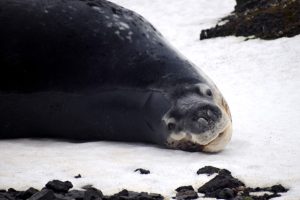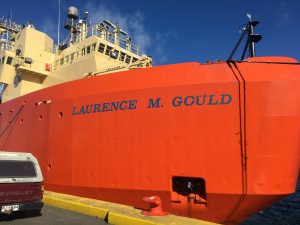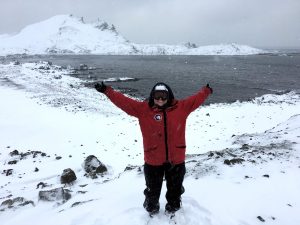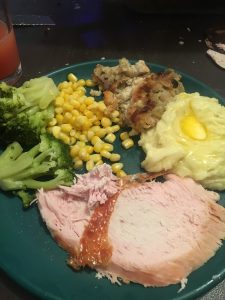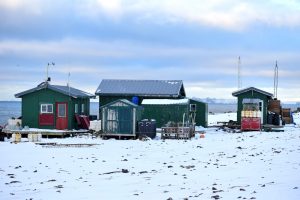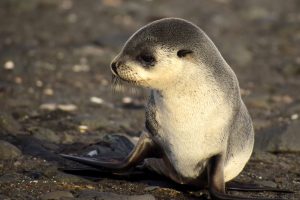1. What are you doing while you are in Antarctica?
We are studying the foraging ecology and physiology of one of the Southern Ocean’s top predators—the leopard seal. Leopard seals are known for their sharp teeth, reptilian appearance, and voracious appetite. However, many aspects of their basic biology remain a complete mystery. Our goal is to understand where they go, how deep they dive, what they eat, and how their physiology enables them to live in one of the most extreme environments on the planet.
2. Wait, you went last year. You’re going back again?
Yes! This will be our second field season of our leopard seal research project. Our first field season was last year (April – May 2018). Having multiple field seasons allows us to work with leopard seals that have different life histories (males + females, juveniles + adults, etc.); we are able to increase our sample size to better document broad patterns; and we can start to understand behavioral flexibility and individual differences. We are using all of this information to understand the biology of leopard seals to better predict how they will respond to a rapidly changing Antarctic environment.
3. How do you get to Antarctica?
For those of us traveling from the U.S, we first fly to Dallas, Texas. Then, we hop on an overnight flight from Dallas, TX to Santiago, Chile. Next, we catch a plane from Santiago to Punta Arenas, Chile. We arrive in the mid-afternoon a day after we left. All of the next day will be spent in Punta Arenas getting all of our gear together, getting issued cold weather gear, taking safety trainings, and moving all of our stuff and ourselves onto the boat. We then get on the ship that will take us from Chile to Antarctica—the Laurence M. Gould (LMG; read more here). On the Gould, we will travel through some of the roughest seas in the world, the Drakes Passage. After a few days, we reach the Southern Ocean and the South Shetland Islands off the Antarctica Peninsula. Our destination is a NOAA field station called Cape Shirreff that is located on Livingston Island in the South Shetlands. To get from the Gould to land, we climb into small inflatable boats (zodiacs). After several trips to and from the ship, our research team and all of our supplies are finally transported to land. We then wave good-bye to the Gould. Five weeks later, the Gould will return and we’ll reverse that entire process to get back home.
4. How long are you going to be gone?
This field season our trip is scheduled for 7 weeks. About two weeks of that is travel time to get there and back (see Question 3). The rest of the time we are on land at Cape Shirreff.
5. What is the weather like?
Cold (shocking, I know)! Actually, when we first get there, it isn’t as cold as you might expect. Some days it even was above freezing (~33°F or 1°C). However, the temperature rapidly starts dropping over the course of our field season, and by the end it was always below freezing (~23°F or -5°C). Now, before you start thinking it wasn’t that cold, the temperature doesn’t account for the wind. There was always wind—usually between 15 to 50 miles per hour! Our field season is from April to May, which means that it is fall turning to winter in the southern hemisphere.
6. What do you eat while you are down there?
Our field team has the motto, “There is no excuse for eating poorly in the field!” and “I don’t trust data taken on an empty stomach.” This works out really well for all of us! If last season is any indicator of what this season will be like, we ate like kings and queens. We had fresh sourdough bread made every other day, which we ate slathered in butter and honey. To celebrate the successful completion of our field season, we had a full Thanksgiving meal, complete with an entire turkey, mashed potatoes, stuffing, broccoli, corn, and even raspberry creme brulee! We have to bring all of our food down with us, and it is classified as “freshies” (fresh fruits, vegetables, cheeses, juices, eggs, etc.), frozen food (meats, frozen vegetables), or non-perishables. All of this food is put on our boat in Chile, travels down with us to Cape Shirreff, gets transferred in small boats to our field site, and then gets stored in different spots in our field camp. The freshies are stored in a room that is the same temperature as the outside—essentially it acts as our fridge. The frozen foods get put into a propane freezer. The non-perishables are stored in tubs outside with rocks on top of them to keep the lids from blowing away. The delicious bread is stored in our stomachs.
7. Where do you stay?
We are staying at a NOAA US AMLR field camp at Cape Shirreff. This research station is made up of three main buildings plus a storage shed and an outhouse. The main living quarters includes a kitchen, a table, and four bunk beds. Another building is half pantry, half living quarters with space for two additional beds. The third building is half tool shed and half research laboratory where all of the samples are processed. One of my favorite parts about the main building, which is where we spend most of our time, is that we have solar powered Christmas lights that can get turned on in the morning which make it feel super cozy.
8. How do you communicate with the outside world?
When we are on land at Cape Shirreff, all of our communications with the outside world happen via satellite phone. We do not have access to the Internet there. The satellite phone works pretty much like a normal phone (except there is no texting), but it drops calls frequently. Last year the shortest call I made without it dropping was 30 seconds and the longest call I made without dropping was 25 minutes. When we are on the boat, there is a satellite phone. We also have a limited ability to connect to the Internet; however, if you use up the tiny amount of data each person is allowed, you have to wait until it resets the next day. I figured that out the hard way when the background applications on my phone used up my data allotment before I even woke up in the morning!
9. What is Antarctica like?
Antarctica is like no place else on earth. In fact, it almost feels like you’ve stepped onto another planet.  There are no plants—nothing green at all (well, except our field camp buildings are painted dark green). Because we are there during the fall to winter, the sun never rises completely in the sky; rather, at high noon it is at a 45° angle above the horizon. However, we rarely saw the sun. Mostly we saw clouds, but the clouds were the most amazing shades of blue, gray, and white. Cape Shirreff, where we stay, is a volcanic island, so everything is either black (the rocks), white (the snow), black and white (penguins), or gray (the sky). And, the animals….oh, the animals are incredible (see Question 10)!
There are no plants—nothing green at all (well, except our field camp buildings are painted dark green). Because we are there during the fall to winter, the sun never rises completely in the sky; rather, at high noon it is at a 45° angle above the horizon. However, we rarely saw the sun. Mostly we saw clouds, but the clouds were the most amazing shades of blue, gray, and white. Cape Shirreff, where we stay, is a volcanic island, so everything is either black (the rocks), white (the snow), black and white (penguins), or gray (the sky). And, the animals….oh, the animals are incredible (see Question 10)!
10. What species do you get to see at Cape Shirreff?
We get to see so many amazing animals at the Cape–especially pinnipeds (seals, sea lions, and walruses) and seabirds. Lsat year we saw 4 pinniped species: leopard seals, Weddell seals, southern elephant seals, and Antarctic fur seals. We also saw two species of penguins: Gentoo penguins and chinstrap penguins. And, there were a variety of seabirds including giant petrels, Cape petrels, and a few species of albatross. The diversity of species was incredible, and seeing all of them was a dream come true.
